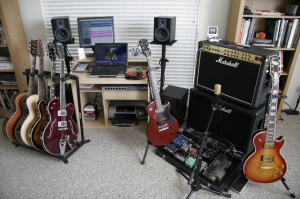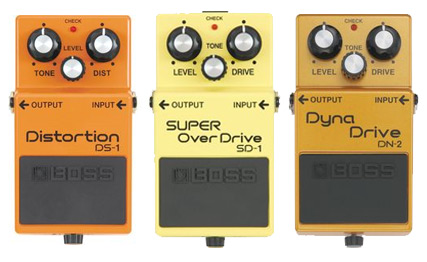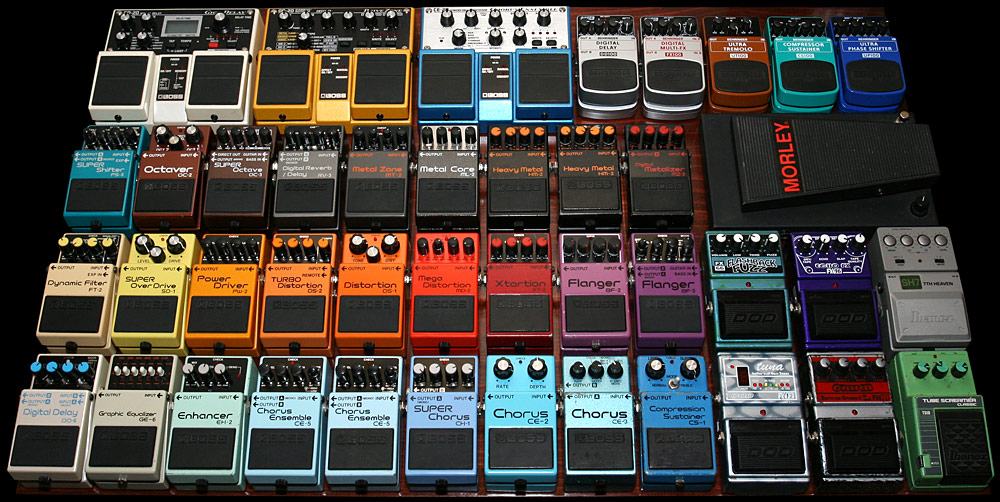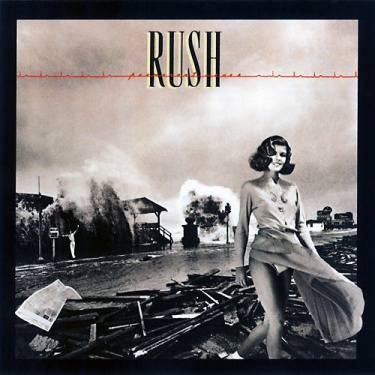“I’m Going to Buy That New Pedal…But First…”
 Gear is everywhere and boy can it be addictive to buy.
Gear is everywhere and boy can it be addictive to buy.
What happens to our brains when we mix emotion, Dopamine and some clever marketing is well documented and is proven to affect how we buy, what we buy and how we feel after the purchase.
But before we make the purchase were confronted with dozens of choices.
Answering the question, “what guitar should I buy?” in the face of so many websites, sales, brands, tones, options, colors, shapes and effects can feel damn near impossible to make on the spot
So what happens?
You freeze.
You continue to scour the Internet looking for reviews and testimonials [link] of people have bought the bass, the envelope filter, the fuzz pedal – whatever it might be – to see what their experience is.
The problem here is exactly what you think it isn’t: by doing all that research, you’re procrastinating. You’re freezing up. You’re afraid to pull the trigger on the purchase because you’re thinking in the back of your mind that the decision you’re about to make will ultimately be the wrong one.
So what happens?
You make no choice. You do research until you lose interest and move on.
Or…
You finally make the purchase but experience buyers remorse so strong that the solution you know is the right one you’ve convinced yourself is in fact the wrong one.
You can’t enjoy your new pedal and you return it. Wait 5-7 business days to get your money back and go on with your life.
Choice Overload, Meet The Devoted Bass Player Who Loves Their Gear
If the picture above sounds familiar, you experienced choice overload, a common symptom that occurs when you’re presented with so many choices your choice is to not make a decision.
You simply can’t decide. Your brain is considering too many possibilities too quickly and in too great of volume.
How would you decide what to get your child whose just about to pick up a bass for the first time among all of this?!
Sure – you read the online reviews and you entered Guitar Center knowing what you want without a doubt in your mind. After seeing all that gear, though, how sure are you that your choice is the right one?
Why More Options Means Less Action And How We’re Hard Wired This Way

A few years ago, the New York Times covered a landmark study that uncovered some truly remarkable findings about how humans make decisions in the face of many and few options. The article covers the work of Dr. Sheena Iyengar, a professor of business at Columbia University and the author of book “The Art of Choosing,”
The study addressed Professor Iyengar’s hypothesis was that “the presence of choice might be appealing as a theory, but in reality, people might find more and more choice to actually be debilitating.”
She tested this hypothesis by setting up a display of an assortment of Wilkin & Sons jams at a mall in California with her research associates.
She began the study with 24 jams on the table and over time worked down to only 6 jams on the table, decreasing the options to choose from. Customers were free to sample, inspect and taste the jams at their leisure and make purchases where see fit.
What Professor Iyengar and her associates noticed that, on average, customers tasted two jams, upfront at their first interaction with the booth and the size of the arrangement of jam was largely irrelevant.
Where the experiment got interesting was when 60% of customers were drawn to the large assortment, while only 40% stopped by the small one.
More interestingly, 30% of the people who had sampled from the small assortment decided to buy jam, while only 3% of those confronted with the two dozen jams purchased a jar.
In summary: when confronted with more choices, people were more likely to choose nothing then to choose something.
So when you see this picture:
versus this picture:
You’re more apt to make a confident, definitive decision among the top 3 pedals versus if you were presented with the 30+ pedals below. And honestly, this array sort of reminds me of the Guitar Center picture above with all the colors and layout.
So I Now I Know How Decisions Are Made, But Why Are Decisions Made?
Psychologist Barry Schwartz can arguably be called the predecessor to Dr. Illengar’s work with his own extensive studies into choices and decision making as it pertains to the American business world.
Dr. Schwartz published The Paradox of Choice in 2004, where he addressed the topic of choice, how humans make decisions and what causes humans to make certain decisions over others.
What made Dr. Schwartz’s work so groundbreaking at the time was that it did a tremendous amount to dispel marginal research on the topic and helped to extinguish the notion that we made choices simply beacause and with little rhyme or reason to our actions.
What Dr. Schwartz instead found we choose based on a handful of parameters:
- Based on what your goals are, or asking yourself the fundamental question: “What do I want?”
- Evaluate the importance of each goal, or how we weigh the input of others input in how it helps us reach our goal. Fun fact: people tend to value anecdotal evidence (or things that play into our own bias) versus expert evidence in decision making.
- Array the options, or how we frame the decision. For example, getting this new bass could get me the tone I want, or it can help me stand out on stage, or it can help be a conversation starter for women after the show, etc.
- Evaluate how likely each one of these goals is to meeting your goal or answering the “what do I want?” question. If the option does not look like it’s going to help you answer your, “what do I want” question, it’s not likely to be accounted for very long.
- Pick the winning option, or the option that answers, “what do I want?”
- Modify goals accordingly, or once we’ve made a choice, our goals realign and something new might be the answer to “what do I want?”
Now, all this helps to us to understand how we make choices, but this still doesn’t answer why we make choices (or don’t at times). Well, as it turns out, Dr. Schwartz covered that to.
We make certain choices based on a limited number of parameters:
- Choice and happiness, or “if I buy this, how satisfied will I feel now and in the future?”
- Freedom and committment, or “how locked in am I to this decision? Do I have the

Pictured: Freewill and freedom of choice freedom to get out at any time or if I make this purchase I’m in it for the rest of my life?”. How much freedom or constraint we have to our decisions affects how we make them. In the case of purchasing new gear, we have a great amount of choice to go back on our decision if it isn’t satisfactory to us and return it for a full refund within a certain window. But if we buy it off Craigslist, we might not have the refund opportunity and our decision involves more commitment and fewer outs.
- Second Decision Rule, or decisions made according to established rules and internal or external influences
- Missed opportunities, or the “what if I had done _____ instead…” You start to look back at the other opportunities that could have been. In other words, buyers remorse.
We Know The How and The Why. Now’s Let’s Talk Solutions
We’ve covered how we make decisions.
We’ve covered why we make decisions.
Now let’s get to the real, actionable stuff: how to control choice paralysis and make smart decisioins the next time you make a purchase of gear. We’re going to look at only 3 solutions. Any more then that and you might get paralyzed by choice 🙂
1. Check out reviews that are actually focused on particular aspects of the gear you’re looking for. Rather than just generally looking for simple good or bad reviews of the gear, look for reviews of the particular piece of gear that answers a specific question.
2. Look for an outside view of the gear. Picture for a moment what the expectations of the gear is versus what it is likely to do in the situation you need it to be in. We make the mistake of imagining an rosier aspect of the pedal or amp then what it might actually deliver. It’s important to stay grounded in this regard and realistically try to think of how the gear will likely behave in the situation you’re going to use it in.
3. Be sure to ask the right questions and establish a ‘base line’ for your decision making. In line with the other two points, when looking for information to make ourselves better informed about a purchase before we make it, our questions are either too shallow, scattershot and generally don’t hit the main pressure points. Next time you’re at Guitar Center or Sam Ash or talking with someone over Craigslist, develop a list of questions that ask specific things that are aimed at answering, “what do I want?” and additionally, “is this what I want?”
Bonus: Remember, any testimony will do.
Last Thoughts
In sum, gear purchases don’t need to be a heady issue plaugued with indecisiveness, buyers remorse and hours and hours of scouring the Internet for validation of you inclination to buy or a reason not to buy.
Purchases of should be guided by the fundamental question: “what do I want?” and “is this what I want?”
If you’re looking for a pedal that:
- Has immense tone control
- Doesn’t suck your low end out
- Fits neatly in your pedal board chain
- and won’t break the bank
then there you go – you’ve set the buying parameters for yourself. You’ve set the guidelines to answer the question, “what do I want?” and as soon as you find something that fits those parameters, make your purchase.
[chimpy_lite_form]
- How to Set up a Pedal Board for Bassists - June 16, 2021
- The Best Bass Guitar Effects Pedals Guide You’ll Ever See [INFOGRAPHIC] - April 24, 2020
- The Ultimate Beginner’s Guide to Everything About Bass Guitar Strings - March 20, 2020



